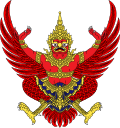| | ||||||||||||||||||||||||||||||
| ||||||||||||||||||||||||||||||
99 of the 186 seats in the House of Representatives | ||||||||||||||||||||||||||||||
| Turnout | 29.50% ( | |||||||||||||||||||||||||||||
|---|---|---|---|---|---|---|---|---|---|---|---|---|---|---|---|---|---|---|---|---|---|---|---|---|---|---|---|---|---|---|
This lists parties that won seats. See the complete results below.
| ||||||||||||||||||||||||||||||
 |
|---|
| |
General elections were held in Siam on 29 January 1948. Following the 1947 coup, the unicameral parliament elected in 1946 was abrogated. It was replaced by a bicameral parliament with a 100-seat appointed Senate and a 99-member House of Representatives. [1]
Voter turnout was 30%. [2]